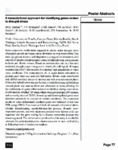Por favor, use este identificador para citar o enlazar este ítem:
http://www.alice.cnptia.embrapa.br/alice/handle/doc/903303Registro completo de metadatos
| Campo DC | Valor | Lengua/Idioma |
|---|---|---|
| dc.contributor.author | MARTINS, A. C. Q. | pt_BR |
| dc.contributor.author | MORGANTE, C. V. | pt_BR |
| dc.contributor.author | SANTOS, C. M. R. | pt_BR |
| dc.contributor.author | SILVA, F. R. da | pt_BR |
| dc.contributor.author | ARAÚJO, A. C. G. | pt_BR |
| dc.contributor.author | BERTIOLI, D. J. | pt_BR |
| dc.contributor.author | BERTIOLI, S. C. de M. L. | pt_BR |
| dc.contributor.author | GUIMARAES, P. M. | pt_BR |
| dc.contributor.author | BRASILEIRO, A. C. M. | pt_BR |
| dc.date.accessioned | 2015-10-20T02:49:00Z | - |
| dc.date.available | 2015-10-20T02:49:00Z | - |
| dc.date.created | 2011-10-18 | pt_BR |
| dc.date.issued | 2011 | pt_BR |
| dc.identifier.citation | In: INTERNATIONAL CONFERENCE OF THE PEANUT RESEARCH COMMUNITY ON ADVANCES IN ARACHIS THROUGH GENOMICS AND BIOTECNOLOGY, 5., 2011, Brasília, DF. Book of abstracts... Brasília, DF: Embrapa Genetic Researces and Biotecnology, 2011. | pt_BR |
| dc.identifier.uri | http://www.alice.cnptia.embrapa.br/alice/handle/doc/903303 | pt_BR |
| dc.description | Stress-responsive mechanisms triggered in plants under drought stress affect plant growth and cause serious limitation to crop productivity. Due to its high genetic diversity and adaptation to a range of environments, wild relatives of peanut constitute a rich source of allele diversity for resistance to biotic and abiotic stresses. Based on previous data and as a 6rst step to identify drought-responsive genes inArachis, the wild specieA. magna, accession KG30097, was selected as it showed high adaptability to water stress conditions. The transcriptome of A. magna leaves subrnitted to gradual water stress was analyzed. Subtractive libraries were constructed with cDNA from leaf tissues of stressed and well-watered control plants. Subtractive hybridization was performed in both directions: cD A from stressed plants was used as driver and afterwards as tester, allowing for the enrichment of genes either induced or inhibited during water stress. In silicoanalysis revealed 759 reads, which were grouped into 249 clusters, with a novelty index of 32,8%. Several up and downregulated genes were identi6ed exclusively in stressed or control conditions. The expression proíile of some differentially regulated genes was validated by real time PCR, using cDNA Erom roots and leafs of stressed and control plants. Glycine descarboxilase, metallothionein-like protein, drought stress responsive protein, and two unknown proteins were shown to be up-regulated and the gene coding for a disease responsive protein was down-regulated. The information produced in this study is a valuable resource for gene identi6cation, characterization of new wild alleles, and development of molecular markers. | eng |
| dc.language.iso | eng | eng |
| dc.rights | openAccess | eng |
| dc.subject | Estresse hídrico | pt_BR |
| dc.subject | Diversidade genética | pt_BR |
| dc.title | A transcriptional approach for identifying genes related to drought stress. | pt_BR |
| dc.type | Resumo em anais e proceedings | pt_BR |
| dc.date.updated | 2015-10-20T02:49:00Z | pt_BR |
| dc.subject.thesagro | Planta | pt_BR |
| dc.subject.thesagro | Amendoim | pt_BR |
| dc.subject.thesagro | Marcador Molecular | pt_BR |
| dc.subject.nalthesaurus | Peanuts | eng |
| dc.format.extent2 | p. 77. | pt_BR |
| riaa.ainfo.id | 903303 | pt_BR |
| riaa.ainfo.lastupdate | 2015-10-19 | pt_BR |
| dc.contributor.institution | UnB; CAROLINA VIANNA MORGANTE, CPATSA; UnB; UnB; UnB; SORAYA CRISTINA DE M LEAL BERTIOLI, CENARGEN; PATRICIA MESSEMBERG GUIMARAES, CENARGEN; ANA CRISTINA MIRANDA BRASILEIRO, CENARGEN. | pt_BR |
| Aparece en las colecciones: | Resumo em anais de congresso (CPATSA)  | |
Ficheros en este ítem:
| Fichero | Descripción | Tamaño | Formato | |
|---|---|---|---|---|
| ID45694.pdf | 432,77 kB | Adobe PDF |  Visualizar/Abrir |









